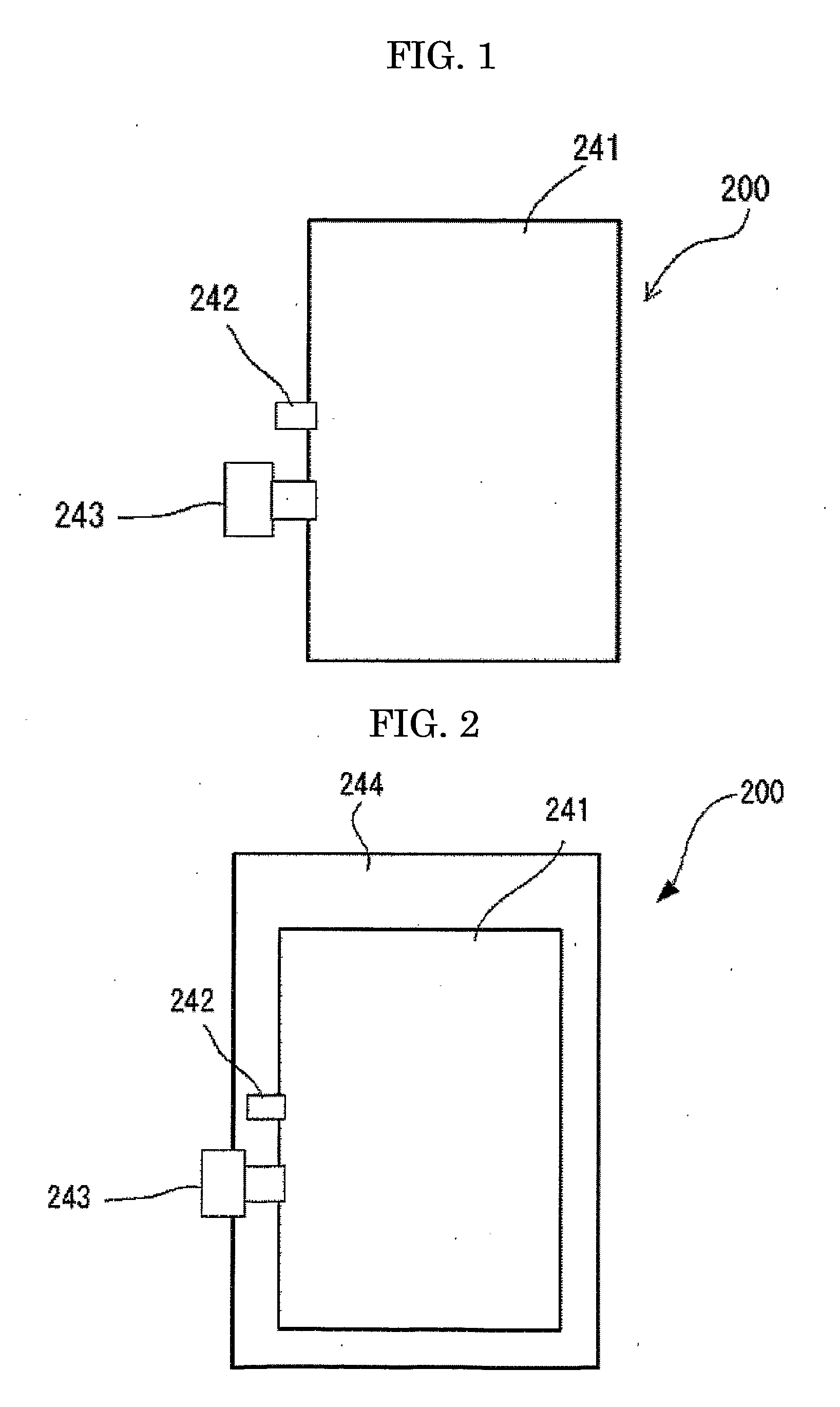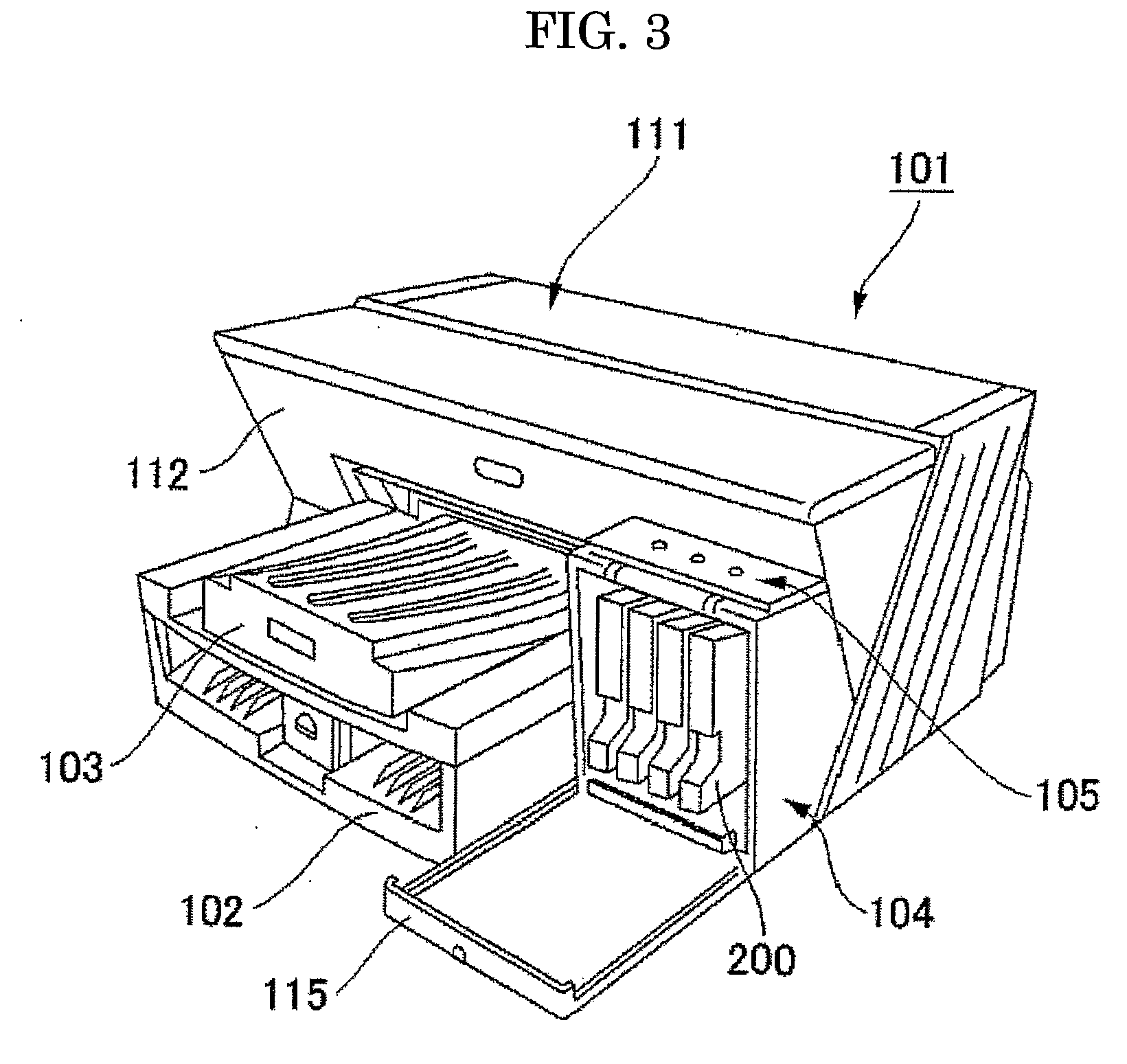Inkjet media, recording method, recording apparatus, ink-media set, and ink recorded matter
a recording media and ink technology, applied in the direction of inks, coatings, thermal imaging, etc., can solve the problems of high cost, complicated process, and high cost of recording media, and achieve the effect of excellent print quality
- Summary
- Abstract
- Description
- Claims
- Application Information
AI Technical Summary
Benefits of technology
Problems solved by technology
Method used
Image
Examples
preparation example 1
Preparation of Copper Phthalocyanine Pigment-Containing Fine Polymer Particle Dispersion
[0338]A 1 L-flask equipped with a mechanical stirrer, a thermometer, a nitrogen gas inlet tube, a reflux tube and a dropping funnel was thoroughly purged with nitrogen gas. Thereafter 11.2 g of styrene, 2.8 g of acrylic acid, 12.0 g of lauryl methacrylate, 4.0 g of polyethylene glycol methacrylate, 4.0 g of styrene macromer (brand name: AS-6 supplied from Toagosei Co., Ltd.) and 0.4 g of mercaptoethanol were placed in the flask, and heated to 65° C. Subsequently, a mixed solution containing 100.8 g of styrene, 25.2 g of acrylic acid, 108.0 g of lauryl methacrylate, 36.0 g of polyethylene glycol methacrylate, 60.0 g of hydroxyethyl methacrylate, 36.0 g of styrene macromer (brand name: AS-6 supplied from Toagosei Co., Ltd.), 3.6 g of mercaptoethanol, 2.4 g of azobismethyl valeronitrile and 18 g of methyl ethyl ketone was added dropwise to the flask over 2.5 hours.
[0339]After addition, a mixed solut...
preparation example 2
Preparation of Dimethyl Quinacridone Pigment-Containing Fine Polymer Particle Dispersion
[0341]A magenta fine polymer particle dispersion was prepared as in Preparation Example 1 except that the copper phthalocyanine pigment was changed to Pigment Red 122. The average particle diameter (D50%) of the resulting polymer fine particles measured using the particle size distribution analyzer (Microtrack UPA supplied from Nikkiso Co., Ltd.) was 127 nm.
preparation example 3
Preparation of Monoazo Yellow Pigment-Containing Fine Polymer Particle Dispersion
[0342]A yellow fine polymer particle dispersion was prepared as in Preparation Example 1, except that the copper phthalocyanine pigment was changed to Pigment Yellow 74. The average particle diameter (D50%) of the resulting polymer fine particles measured using the particle size distribution analyzer (Microtrack UPA supplied from Nikkiso Co., Ltd.) was 76 nm.
PUM
| Property | Measurement | Unit |
|---|---|---|
| surface tension | aaaaa | aaaaa |
| thickness | aaaaa | aaaaa |
| volume-average particle diameter | aaaaa | aaaaa |
Abstract
Description
Claims
Application Information
 Login to View More
Login to View More - R&D
- Intellectual Property
- Life Sciences
- Materials
- Tech Scout
- Unparalleled Data Quality
- Higher Quality Content
- 60% Fewer Hallucinations
Browse by: Latest US Patents, China's latest patents, Technical Efficacy Thesaurus, Application Domain, Technology Topic, Popular Technical Reports.
© 2025 PatSnap. All rights reserved.Legal|Privacy policy|Modern Slavery Act Transparency Statement|Sitemap|About US| Contact US: help@patsnap.com



